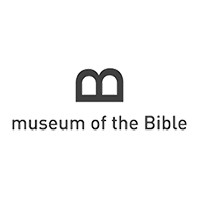WASHINGTON — Museum of the Bible has launched “Museum of the Bible Magazine,” its first online publication dedicated to behind-the-scenes looks at exhibits, interviews with special guests and explorations of the Museum Collections with curators.
The inaugural issue covers topics such as the 1217 Magna Carta exhibit, Ken Howard and his quest to bring Bibles into Russia during the Soviet Era, the biblical reading practices of Corrie ten Boom, the preservation of ancient churches of Nagorno-Karabakh and the story of the Lipnice Bible’s return to the Czech Republic.
“We’re always looking for innovative ways to bring the Bible to life to audiences around the world, and creating a museum magazine has long been a dream of ours,” said Karen Poth, Creative Director of Museum of the Bible. “Our new magazine allows guests to dive deep into our exhibits and artifacts and to get to know our incredible team of people who make the museum the amazing place that it is.”
“Magna Carta: Tyranny. Justice. Liberty.” — On exhibition through Jan. 2, 2022, visitors can view an original 1217 Magna Carta, one of only four in the world. This major exhibit was created in partnership with Hawkwood International, which has the exclusive right to exhibit the Hereford Cathedral Magna Carta and the 1215 King’s Writ, to bring the exhibit to Washington, D.C.
Beginning in the early 13th century in England, the exhibition explores the medieval world, the context of the creation of the Magna Carta and the personalities involved. The second part of the exhibition looks at the Americas in the 17th and 18th centuries, where the notion of the Magna Carta took on new meaning in the struggle for independence.
“Serving the Soviets: One Man’s Quest to Bring Bibles to the USSR” — Through Jan. 2, 2022, guests can learn the story of Ken Howard, who searched for ways to bring Bibles into the USSR during the Cold War. Initially, Howard and his team struggled to smuggle Bibles into the officially atheist country. However, Howard’s discovery of screen printing changed their strategy; instead of trying to bring Bibles in, they would print them within the borders. Rudimentary screen-printing methods, using fabric smuggled in as curtain material or worn as petticoats, allowed pages to be printed without being noticed. Eventually, there were 75 printing operations throughout the USSR and more than 1 million pages were printed.
The exhibit — the first public telling of Howard’s story — includes video of Howard recounting his attempts to bring Bibles into the USSR as well as artifacts from the era, including a mechanical device and a printed transparency and frame used to screen print the Gospel of John.
Corrie ten Boom — From Jul. 13,2020, through Feb. 14, 2021, the museum invited guests to learn more about Corrie ten Boom’s incredible life through “Light of Hope: The Corrie ten Boom Story.” Ten Boom was 48 years old when Nazi troops stormed her hometown of Haarlem in the Netherlands in 1940. She lived with her father and eldest sister, Betsie, running the family’s watch shop out of their house. Following the invasion, Ten Boom risked her life to help Jewish neighbors. Drawing strength from the Bible, Ten Boom became a resistance ringleader ferrying away Jewish refugees and called her network “God’s Underground.” At its peak, the network included 80 individuals and helped 800 people escape Nazi persecution.
View Corrie ten Boom’s Bible, given to her by the late Rev. Billy Graham, online.
The newest virtual exhibit, “Ancient Faith: The Churches of Nagorno-Karabakh,” — the first of its kind in the world — honors centuries of Armenian Christian heritage in the Nagorno-Karabakh region.
In the early fourth century, Armenia became the first country to declare Christianity the state religion, after Saint Gregory the Illuminator converted King Tiridates the Great. The Nagorno-Karabakh region, where Saint Gregory lived and spread the Christian faith, is home to ancient churches, monasteries and monuments. Centuries later, many of those monuments are at risk of damage, destruction or cultural erasure after the recent conflict with Azerbaijan.
The online exhibit shows the sacred sites of Nagorno-Karabakh, historically known to Armenians as Artsakh. Virtual visitors can learn about the history of these remarkable places, meet some of the people who have lived and worshipped there and hear them tell their stories of faith as part of these ancient communities.
Developed in collaboration with leading scholars of early Christian art, architecture, theology and history in the Caucasus region, “Ancient Faith: The Churches of Nagorno-Karabakh” highlights seven significant sites.
More information on Museum of the Bible is available here.

